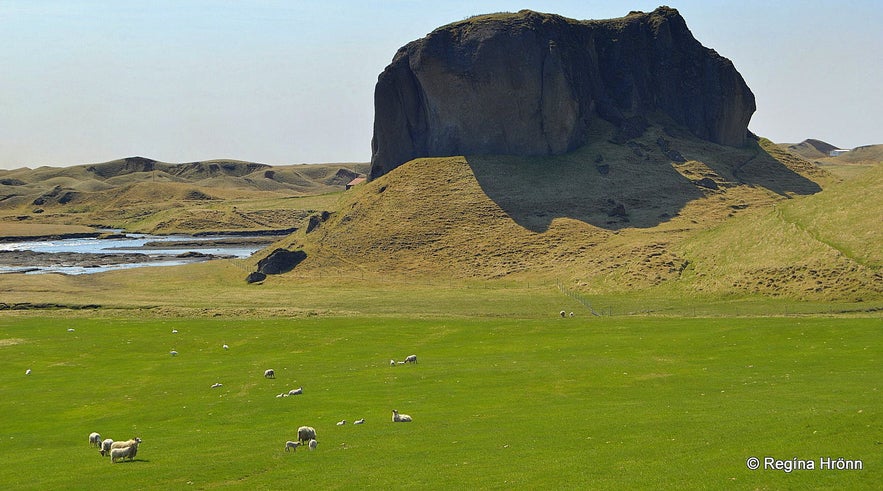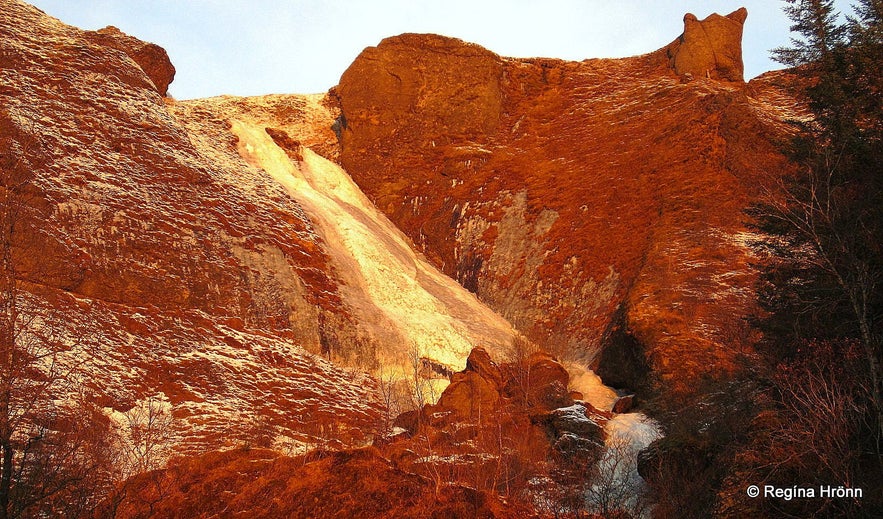
คิร์กยูไบยาร์คลอสตูร์ (Kirkjubæjarklaustur) หรือที่คนท้องถิ่นเรียกกันว่า “คลอสตูร์” (Klaustur) เป็นหมู่บ้านเล็กๆ ที่มีประชากรประมาณ 180 คน ตั้งอยู่ในเทศบาลสกัฟตาร์เฮรปปูร์ ทางตอนใต้ของไอซ์แลนด์ หมู่บ้านนี้ตั้งอยู่ระหว่างเมืองวิกและเขตอนุรักษ์ธรรมชาติสกัฟตาเฟลล์
สำรวจความงดงามของไอซ์แลนด์ใต้ได้ผ่านทัวร์ชายฝั่งทางใต้
ทำไมคุณถึงวางใจในเนื้อหาของเราได้
Guide to Iceland คือแพลตฟอร์มท่องเที่ยวที่น่าเชื่อถือที่สุดในไอซ์แลนด์ ในแต่ละปี เราช่วยเหลือนักท่องเที่ยวหลายล้านคน เนื้อหาทั้งหมดของเราเขียนและตรวจสอบโดยผู้เชี่ยวชาญท้องถิ่นที่รู้จักไอซ์แลนด์อย่างลึกซึ้ง คุณจึงมั่นใจได้ว่าคำแนะนำด้านการท่องเที่ยวของเรามีความถูกต้อง ทันสมัย และเชื่อถือได้
คลอสตูร์ตั้งอยู่ใกล้ถนนวงแหวน ห่างจากเรคยาวิกไปทางทิศตะวันออกประมาณ 250 กิโลเมตร เป็นหนึ่งในไม่กี่หมู่บ้านที่มีสิ่งอำนวยความสะดวกครบครัน เช่น ปั๊มน้ำมัน ร้านอาหาร ที่พัก และมีซูเปอร์มาร์เก็ตอยู่ระหว่างเมืองวิก อี มิร์ดาล และเฮิฟน์
ประวัติความเป็นมา

ประวัติศาสตร์ของคิร์กยูไบยาร์คลอสตูร์มีความแตกต่างจากการตั้งถิ่นฐานแบบดั้งเดิมของไอซ์แลนด์ในหลายแง่มุม เชื่อกันว่า นักบวชชาวไอริชที่เป็นนักเดินทางหรือที่เรียกว่า “ปาปาร์” (Papar) ในภาษาไอซ์แลนด์ได้ตั้งถิ่นฐานในพื้นที่นี้ก่อนที่ชาวนอร์สจะมาถึง
ตามประเพณีดังกล่าว มีการกล่าวว่าผู้ที่ไม่นับถือศาสนาคริสต์ไม่สามารถย่างเท้าเข้าสู่คลอสตูร์ได้ เพราะที่นี่ถือเป็นพื้นที่ที่ยึดมั่นในศาสนาคริสต์อย่างเคร่งครัด
มีเรื่องเล่าขานมากมายเกี่ยวกับพื้นที่นี้ หนึ่งในนั้นเล่าเกี่ยวกับชาวนอกศาสนาที่ชื่อ Hildir Eysteinsson ซึ่งพยายามจะย้ายมาอยู่ที่นี่ในศตวรรษที่ 10 แต่เมื่อเขาก้าวเข้าสู่ชายแดนของคลอสตูร์ เขาก็ล้มลงเสียชีวิตทันที และถูกฝังไว้บนเนินเขาใกล้เคียงที่เรียกว่า ฮิลดิชเฮอกูร์ (Hildishaugur) หรือ “เนินของฮิลดีร์”
แม้ชื่อเต็มของหมู่บ้าน “Kirkju-bæjar-klaustur” อาจจะออกเสียงยาก แต่ชื่อเรียกนี้กลับบอกเล่าเรื่องราวของพื้นที่ได้เป็นอย่างดี โดยคำว่า “Kirkju” หมายถึงโบสถ์ “bæjar” หมายถึงฟาร์ม และ “klaustur” หมายถึงคอนแวนต์
คำว่า “Klaustur” ถูกเพิ่มเข้าไปในชื่อดั้งเดิม “Kirkjubær” ในปี ค.ศ. 1186 เมื่อคอนแวนต์ของแม่ชีเบเนดิกตินได้มาตั้งถิ่นฐานที่นี่
ในช่วงเวลา 364 ปี ก่อนการปฏิรูปศาสนาในปี ค.ศ. 1550 คอนแวนต์แห่งนี้มีบทบาทสำคัญต่อประวัติศาสตร์ปากเปล่าของไอซ์แลนด์ตอนใต้ โดยสถานที่อย่าง Systrastapi (โขดหินของแม่ชี) น้ำตก Systrafoss และทะเลสาบ Systravatn ต่างก็ได้รับการตั้งชื่อตามชุมชนแม่ชีในพื้นที่นี้
ความเชื่อพื้นบ้าน
 ภาพโดย Regína Hrönn Ragnarsdóttir
ภาพโดย Regína Hrönn Ragnarsdóttir
เรื่องเล่าพื้นบ้านที่เกี่ยวข้องกับสถานที่เหล่านี้เต็มไปด้วยเรื่องราวเกี่ยวกับพฤติกรรมผิดศาสนา ความเชื่อโชคลาง และความตาย
ตัวอย่างเช่น โขดหินของแม่ชี (Sister’s Rock) ถูกกล่าวขานว่าเป็นสถานที่ฝังศพของแม่ชีสองคนที่ถูกประหารชีวิตเนื่องจากพฤติกรรมอันบาป พวกเธอถูกกล่าวหาว่ามีพฤติกรรมผิดศีลธรรมหลากหลาย เช่น ขายวิญญาณให้ปีศาจ ลักเอาขนมปังศีลจากโบสถ์ มีสัมพันธ์ทางกายกับบุรุษ และดูหมิ่นสมเด็จพระสันตะปาปา
ไม่ว่าจะผิดจริงหรือไม่ แม่ชีทั้งสองถูกลงโทษเผาทั้งเป็นในทันที
หลังจากการปฏิรูปศาสนา แม่ชีคนหนึ่งได้รับการล้างมลทินในข้อกล่าวหา และมีเรื่องเล่าว่าดอกไม้บานสะพรั่งเหนือหลุมศพของเธอ ในขณะที่หลุมศพของอีกคนยังคงว่างเปล่า เป็นเครื่องเตือนใจถึงความไม่พอใจของจิตวิญญาณที่ล่วงลับ
สถานที่ท่องเที่ยวใกล้เคียง
แม้จะมีขนาดเล็ก แต่หมู่บ้านคลอสตูร์ก็ถือเป็นจุดเชื่อมโยงสำคัญสู่สถานที่ท่องเที่ยวกลางเกาะ เช่น ปล่องภูเขาไฟลากิในอุทยานแห่งชาติวัทนาโจกุล และเส้นทางเดินป่าลานมันนาเลยการ์ในเขตอนุรักษ์ธรรมชาติฟยาลลาบักที่เต็มไปด้วยทิวทัศน์งดงาม นอกจากนี้ ห่างจากหมู่บ้านเพียงไม่กี่กิโลเมตรคือ หุบเขาฟยาดาร์กยูฟูร์แคนยอนที่น่าตื่นตาตื่นใจ
หากเดินไปทางตะวันออกของคิร์กยูไบยาร์คลอสตูร์ในระยะทางสั้นๆ คุณจะพบกับสถานที่น่าสนใจอย่างคิร์กยูโกลวิด หรือ "พื้นโบสถ์" ซึ่งเป็นพื้นที่หินบะซอลต์ขนาด 80 ตารางเมตรที่ถูกน้ำทะเลและการละลายของธารน้ำแข็งหล่อหลอมให้กลายเป็นรูปร่างแบนราบอย่างเป็นธรรมชาติ รวมถึงสามารถเดินจากหมู่บ้านไปยังซิสเตอร์ร็อก "โขดหินของแม่ชี" และ "น้ำตกของแม่ชี" ได้เช่นกัน
สถานที่ทั้งสามแห่งนี้ยังคงไม่เป็นที่รู้จักมากนัก เหมาะสำหรับผู้ที่ต้องการหลีกหนีจากฝูงชน
ด้วยตำแหน่งที่ตั้งบนชายฝั่งทางตอนใต้ คลอสตูร์มักเป็นจุดแวะหรือทางผ่านสำหรับผู้ที่เดินทางไปยังทะเลสาบธารน้ำแข็งโจกุลซาร์ลอน เขตอนุรักษ์ธรรมชาติสกัฟตาเฟลล์ หรือ ถ้ำน้ำแข็ง รวมถึงผู้ที่เดินทางรอบเกาะไอซ์แลนด์









